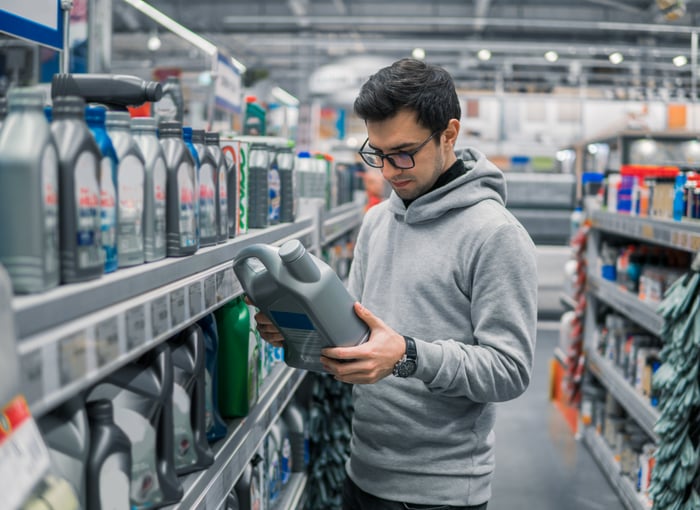The best dividend-paying companies are ones that go beyond the basics of simply directly paying their shareholders for the risks they take from investing. The way they do that is by increasing those dividends over time as the business grows, boosting the rewards of ownership and enabling those shareholders to profit while staying invested.
Indeed, when looking for great dividend stocks, the No. 1 sign I look for is an answer to this question: "How sustainable is this company's ability to continue increasing its dividend?" There are many factors that feed into the answer to that question, and when they all work together, the result can truly be a remarkable business to own. The three factors we'll discuss in particular are key.

Image source: Getty Images.
Factor 1: Business line
What a company does to earn its money is key to its ability to regularly increase its dividend. If the business is too tied to the ups and down of the overall economy, then its dividend is at risk in recessions. Genuine Parts (GPC -0.56%) is an excellent example of a company that isn't tightly tied to the economic cycle. It's in the business of selling replacement auto parts.
NYSE: GPC
Key Data Points
New cars are a very economically sensitive business line. People aren't generally willing to pay tens of thousands of dollars on a new vehicle unless they're pretty confident they'll have the financial position to cover the costs. The flip side is that when they're worried about their futures, they're more likely to keep old cars limping along for longer. And the older a car gets, the more likely its parts will wear out. That reality keeps demand strong for Genuine Parts' business even in rough economic times.
Factor 2: Balance sheet strength
Of course, no matter what business line a company is in, stuff happens. Things go wrong, and when they go wrong, a company's revenues can get derailed, or it may need to overinvest just to get close to recovering to what it once had. When (not if) things go wrong, it can get extremely tempting to cut back on a dividend to preserve cash and focus on recovery.
That's where a strong balance sheet can come in handy. If a company has a low enough debt level and ample enough cash reserves, it has sources of cash other than from cutting its dividend to cover those emergencies. That makes it more likely it can keep its dividend strong when it otherwise might have had to reduce it to protect its core.
Once again, Genuine Parts performs well on that front. The company has a debt to equity ratio of around 1.1, which is the corporate balance sheet equivalent to having a $110,000 mortgage balance on a $210,000 home. That means it hasn't overleveraged itself and looks likely able to both service its existing debt and borrow money if it needs it, helping protect its dividend.
Likewise, Genuine Parts has a current ratio of around 1.2. That means it has enough near-term assets like cash on its balance sheet to cover the key liabilities it expects to come due over the next year. That also gives great reason to believe that if something goes wrong, it could have the resources to cover it without having to borrow new money to cover it.
Factor 3: Payout ratio
A company basically has two ways to pay for its expansion. It can either cover the costs for its expansion from the cash it generates from its operations, or it can raise new capital, through stock or debt offerings, to cover those costs. Of the two, paying for expansion through operating cash flow is a more sustainable model, as it doesn't put the balance sheet at risk and doesn't dilute existing shareholders.
The less of its operating cash that goes into its dividend, the more of it is available to put toward expansion, which gives the dividend more room for future growth. Yet again, Genuine Parts performs well, with around a 42% payout ratio. That means the company is able to retain just over half of its income to invest in its growth and, ultimately, the future growth of its dividend.
Put it all together for a great, long-term dividend growth story
When looked at through the lenses of those three factors, it quickly becomes clear how Genuine Parts has been able to increase its dividend for 66 consecutive years. With the anniversary of its last dividend increase coming up in about a month, the company looks well positioned to likely make it 67 years.
Fortunately, those three factors are ones that ordinary investors can look for fairly easily. As a result, if you're less interested in owning Genuine Parts itself and more interested in owning the next company capable of building an amazing dividend growth streak like it, you can seek it out yourself. Once you learn how to recognize those factors, it gets much more straightforward to see the telltale signs of a business that just might become the next great dividend growth stock.

